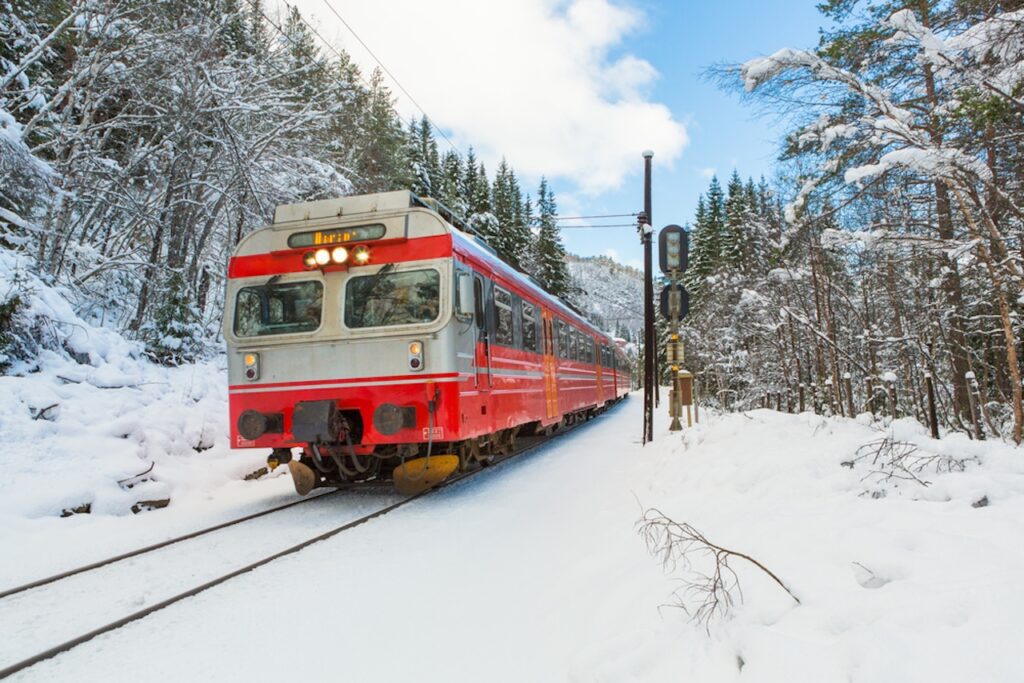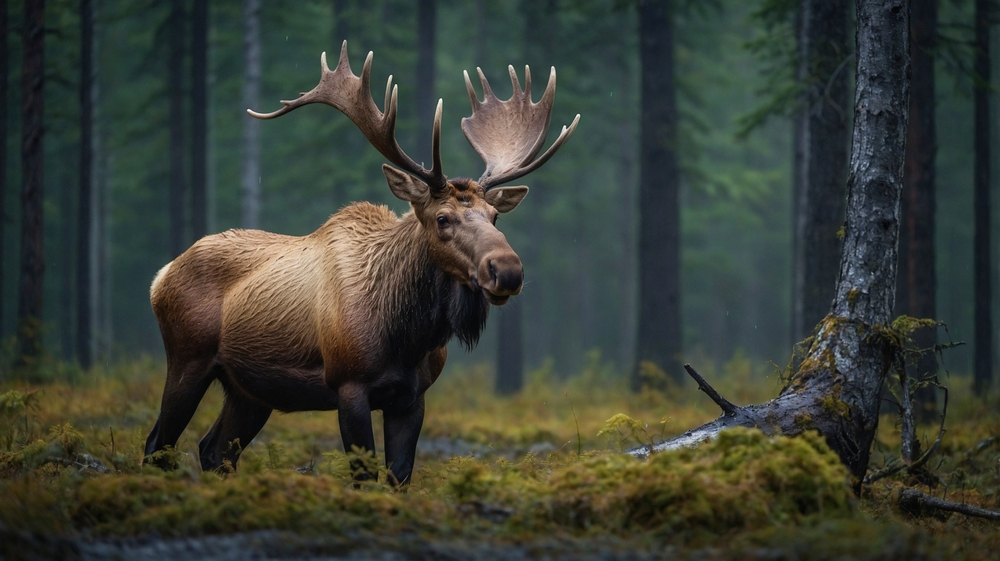Maybe what we need is to appreciate life’s in-between moments. No plot twists, no jump cuts—just quiet observation. It’s nothing, it’s everything.
When I arrived in Europe in April for a month of remote work, my social media algorithm changed. Instead of my discovery feed being filled with existential dread and sped-up videos explaining another hack to make life even faster, videos of moose and fjords and crackling fire began to appear.
Somewhere in Sweden, herds of moose are crossing rivers on their seasonal great migration, covered by hundreds of cameras livestreaming 24/7 along the route; fjords in Norway are slowly drifting across the sea; and a train is making its way through the Swiss alps.
On the other side of these scenes are millions of people watching around the world. My first reaction was: what the hell is this? Yet watching these videos became, fast enough, a routine. I would wake up to work at 3 am (9 am in Manila) in my flat in Budapest, when spring felt more like winter. I would make coffee, open the shutters to light coming from the street lamps, and spend a few minutes watching the great moose migration, their eyes like bright white pins in night-vision cameras. No commentary, no background music.
I don’t want to like, subscribe, or engage. I want to drift. Let the moose cross the river. Let the train sway through snow-dusted curves. Let the fire crackle and light up the dark corners of my screen. It’s my passive, gentle rebellion against the rush.
That’s how I would begin my day: with Slow TV, a radical genre of long-form programming that captures in real-time mundane events with minimal or no editing. Just quiet observation.
It’s the genre we didn’t know we needed until the world became one repetitive video. Just look at content creators doing the same thing over and over again, hopping on trends that are entertaining at first and then just plain boring. There is nothing to be gained from another video doing the exact same thing as the hundred others before it.
Does Slow TV add anything to our lives? Well, not exactly. But it offers an antidote to that existential dread that hits at 3 am, prodding us to question our place and purpose. Slow TV encourages us to pause, to breathe, to not do anything. It can be one long meditation, if you will, one frame at a time. People are watching these live streams for hours not despite the lack of dramatic conflagration but precisely because of it. No ads, no plot twists, no screaming—just flames dancing, trains moving, fjords drifting, hands knitting.
In an age of eight-second attention spans, the idea of watching a seven-hour train ride in real time might sound absurd. But for millions, that’s exactly the point.
Related story: New York stories
Related story: The subtle brilliance of Naoki Eguchi’s omakase
Norwegian beginnings

Some of Slow TV’s blockbuster hits are nothing new—except this time, they’re streaming live. I’ve long seen fire crackling on TVs in hotel rooms, a looped video meant to trick the brain that it’s warm inside even when it’s not. Maybe it’s the sound of crackling logs and images of tongues of flame but, dammit, you feel as warm and nice as waking up on a Christmas morning.
Many years ago, I had a hotel room over the Christmas holidays in Istanbul that had a led screen (not TV) of a fireplace. I stood in front of it, puzzled, because it seemed to emanate real heat. It took me half a minute to realize that the room’s heater grate was right beneath the monitor. I thought it was brilliant!
Slow TV originated in Norway in 2009 when public broadcaster NRK aired a seven-hour train journey from Bergen to Oslo in real time. Viewers were mesmerized. What was supposed to be a one-off novelty sparked a national phenomenon. Since then, NRK has aired everything from knitting marathons to coastal cruises and reindeer migrations, drawing millions of viewers and even international acclaim.
The concept has since been adopted in other countries, with shows like “The Fireplace” on Netflix; the Swedish moose migration livestream (“Den Stora Älgvandringen”); “Hurtigruten,” a 134-hour broadcast following a coastal ferry trip; and even Japanese forest-watching YouTube channels.
But why has Slow TV resonated so deeply? Why does it even exist? Well, for me and many others, it’s because it soothes the psyche. In contrast to the barrage of overstimulation and rapid pacing of content, Slow TV allows the brain to decelerate. It encourages us to observe, to pause.
Psychologists say this kind of content can induce a state of mindfulness, reducing anxiety and creating a sense of calm. There’s no urgency, no pressure to follow a plot or anticipate a twist. Just being, watching, absorbing, sitting in the present.
Related story: The Paris I love is the Paris of Hemingway
Do you need Slow TV?

I am so disillusioned with algorithm-fed content. I am digitally fatigued, sick of creators and their fake sincerity, their content looking exactly like one another, everything feeling like an emotional manipulation, everyone the main character.
I am especially tired of news content creators censoring themselves for the algorithm. What’s wrong with saying murder when the news is about a murder? Or suicide? Or rape? This whole self-censorship is creating a generation for whom such words lose their horror because they’re not mentioned. (This deserves another article.)
There’s none of these on Slow TV. No plot twists, no jump cuts—just quiet observation. That’s exactly what I need.
I don’t want to “like,” “subscribe,” or “engage.” I want to drift. Let the moose cross the river. Let the train sway through snow-dusted curves. Let the fire crackle and light up the dark corners of my screen. By watching these, I am reminded that my presence is enough. It’s my passive, gentle rebellion against the rush.
It’s nothing, but it’s everything to me.





